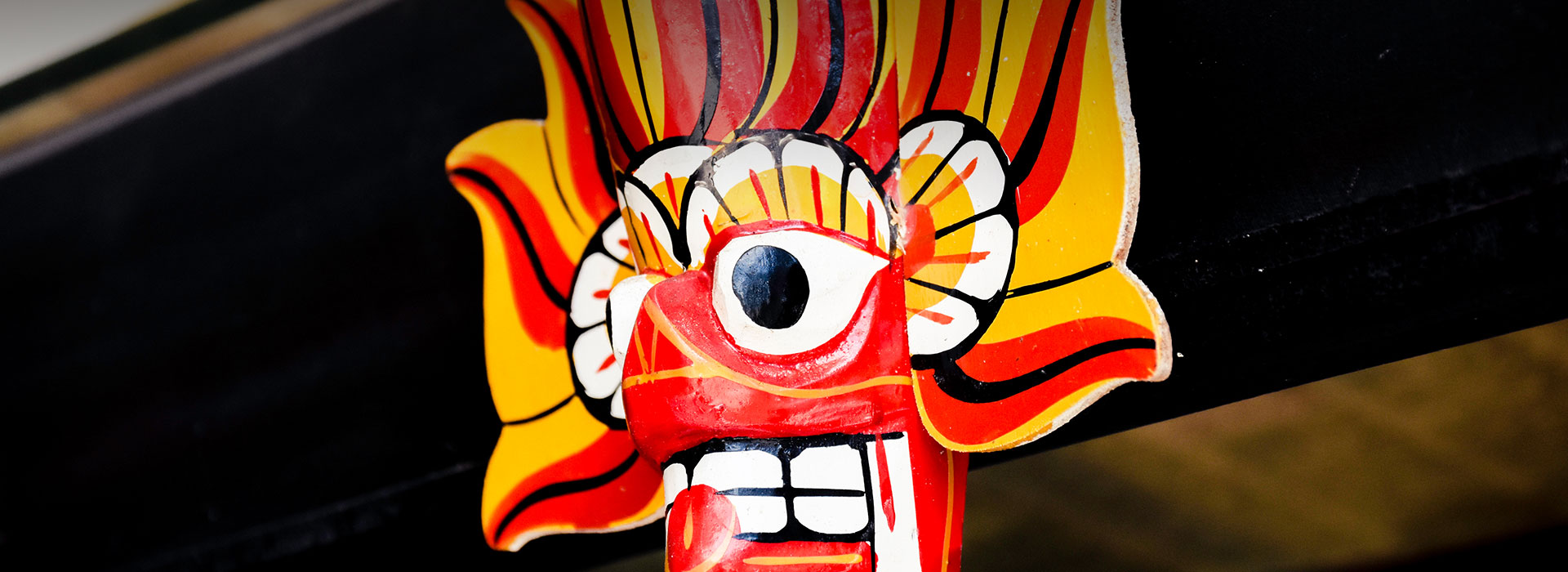3 Artisanal Crafts of Sri Lanka
Sri Lanka is well known for its fabulous beaches, lush mountains, and interesting history, however, one aspect of the island that is often overlooked is its long tradition of artisanal crafts. The country has a vibrant history when it comes to handicrafts. From jewellery making, cane crafting, and even mask painting— these handmade masterpieces have become an integral part of Sri Lankan culture.
Being an ethnically diverse island nation, Sri Lanka has been influenced by many cultures and traditions throughout the years, and over time cultures have merged to create a uniquely Sri Lankan identity. Here are three craft traditions that you should experience when you visit the island.
Masks
The vividly coloured masks with bulging eyes and animal motifs have become a hallmark of Sri Lanka, however, most travellers do not know the purpose behind one of the country’s most popular souvenirs! Mask making is a practice that originated in the south of Sri Lanka, but similar practices can also be seen in South India. There are three types of masks, with each being used for a specific purpose:
- Kolam Masks, these are used in storytelling dances which are more satirical, and the masks are caricatures.
- Raksha Masks, these are the famous demon masks and are used to ward off evil spirits. They are also used during festivals.
- Sanni Masks, these masks are worn when performing a Sanni Yakuma, a devil dance which is an exorcism of sorts. Before modern medicine, it was believed that illnesses were caused by demonic possession and there were 18 demons for 18 ailments. During the devil dance, an edura (exorcist) will wear the mask and perform the ritual.
These masks are made from Kaduru wood which is dried and then carved by hand. They are colourfully painted using natural pigments.
Where to go: visit Ariyapala Mask Museum in Ambalangoda on the south coast.
Beeralu
Beeralu or lace is one of the most intricate and delicate artisanal trades in Sri Lanka. Introduced to the island by the Portuguese during their reign in the 16th century, this cottage industry flourished under the rule of the Portuguese and the Dutch. Weaving beeralu is a rather long and arduous process. The design is first hand-drawn on a piece of graph paper which is then pinned on a pillow, with bobbins outlining the shape of the design. The weavers then take a piece of string and weave it around each pin, knotting it as they go, and these knots ultimately gives beeralu its unique design.
The whole process is very time-consuming, which is why most often long strips of lace are made and then later attached to things like blouses, tablecloths and curtains. However, more contemporary local designers are now using beeralu to create modern looks from sarees to gowns and even crop tops!
Where to go: Sipnara Handicrafts Centre, Galle.
Agasti Jewellery
Jewellery making is a centuries-old Sri Lankan craft that has been around the island since the time of the ancient kingdoms. Traditionally, Sri Lankan jewellery was made from silver as it had a more earthy quality and it did not stand out the way gold did. Colourful semi-precious gems would be inlaid into the silver, but the most prestigious of these stones was agasti. Agasti is a derivative of agate and it somewhat resembles a coral coloured pearl, however, the beauty of these pieces come from the delicate silver lining. These silver linings are so intricate – it almost looks like lace. Traditionally, there was a special group of people to create these works of art, and they were exclusively handmade for Kandyan royalty and aristocracy. Necklaces, earrings and bracelets were fashioned out of these orange beads and their silvery lace borders, and they were worn as a symbol of power.
Where to go: The Kandyan Arts Association
These artisanal crafts are sadly slowly being phased out of Sri Lankan culture, with more people opting for cheaper and quicker options. The intricacies of each trade are passed from generation to generation, from mother to daughter, and father to son; and hopefully, as time goes on these beautiful crafts will still remain. If you are looking to be more sustainable in your travels, try to visit these cooperatives and purchase from them directly rather than from large souvenir shops. By doing that you will not only get an incredible piece of Sri Lanka to take back with you, but you will also help keep the tradition alive.
